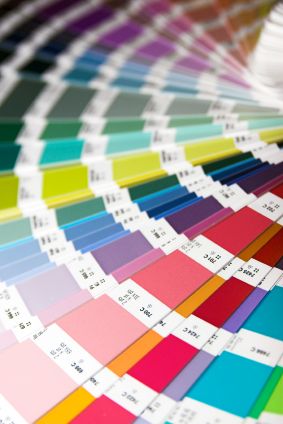
Which Ink?
Choosing the right ink combination's can have a dramatic effect on your finished
product. Use this handy ink guide to help you make the correct ink selection.
• Black ink, as you might expect, is the most common and least expensive ink.
• Spot colors are printed with premixed inks. You can choose from thousands of
different spot-color inks. A spot color printed at 100% is a solid color and has no
dot pattern.
• Process colors are reproduced by printing overlapping dots of cyan, magenta, yellow, and black (CMYK) inks. To create blue, for example, you combine cyan dots and magenta dots. Your eyes merge the cyan and magenta dots to perceive the color blue. Process printing gives us the ability to simulate photographic images using just four basic ink colors.
• Metallic inks use metallic powders to give a pleasing luster. Metallic inks can
often add an extra sparkle or touch of class to your printing project.
• Varnish is used as a coating over printing to protect the printing and increase gloss. Use spot colors when …
• You need three or fewer colors and you will not be reproducing process-color
photographs.
• You want the limited color variety you get from one or two spot colors and tints of
those colors.
• You want to print varnishes or special inks, such as metallic spot inks.
Use process colors when …
• You need more than three colors in your design. In general, printing with process
inks costs less than printing with three or more spot inks.
• You want to reproduce scanned color photographs or color artwork that can only
be reproduced with process colors.
We are here to help you determine the right ink colors for your project. Just ask!
